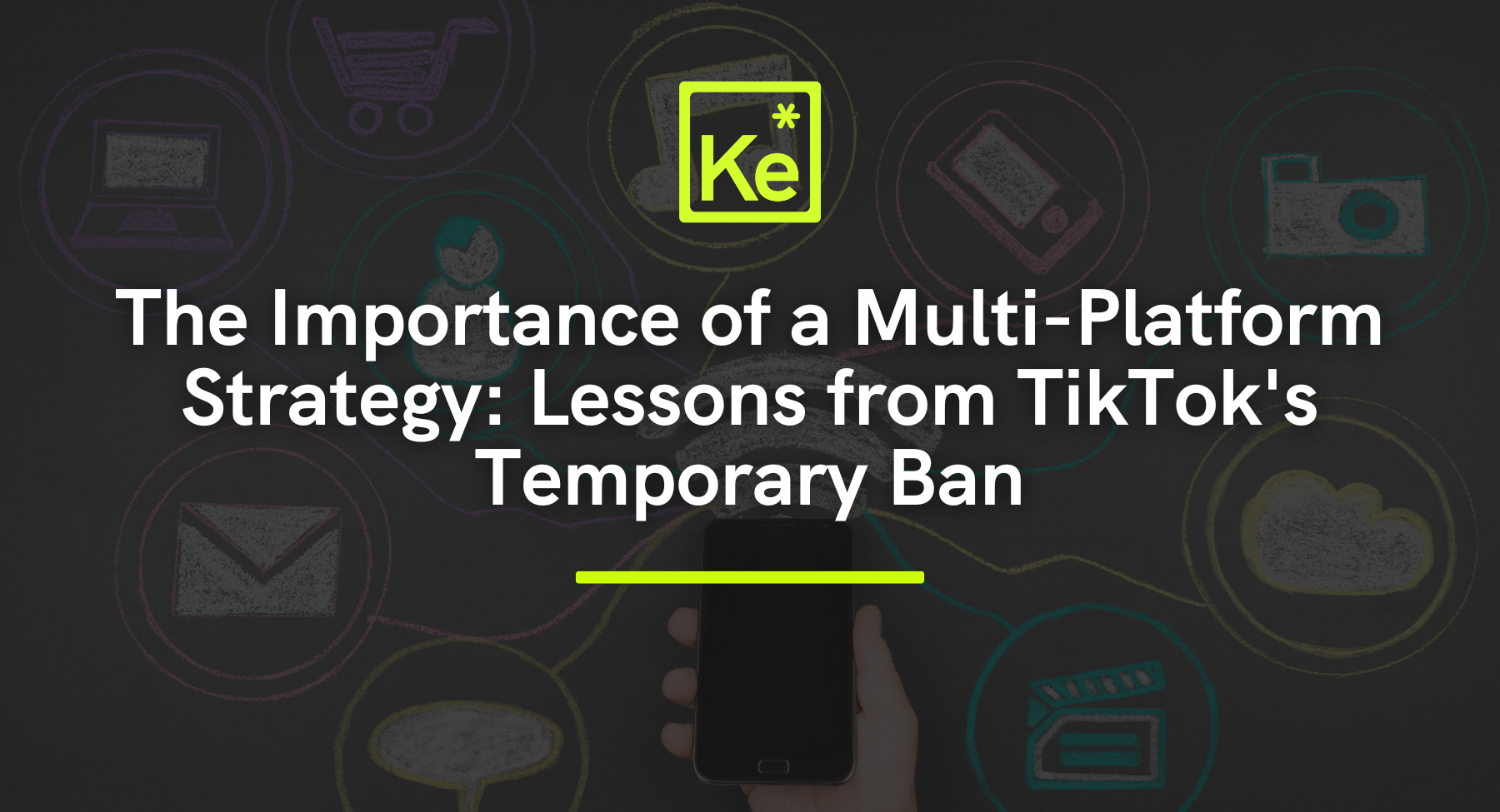In today’s fast-paced digital world, it’s easy to lean heavily on the platforms that deliver the best results for your business – but putting all your eggs in one basket is risky. The recent temporary TikTok ban was a wake-up call, showing just how fragile a single-platform strategy can be.
The TikTok Ban: A Wake-Up Call
At 8:30pm on January 18th, 2025, TikTok went down for about 13 hours. For small businesses, influencers, and creators who rely on it for marketing or income, those hours weren’t just frustrating—they were expensive.
TikTok’s ad revenue for 2023 in the United States was estimated at $6 billion. That means the platform generates about $16.4 million a day in the U.S. alone. For a 13-hour outage, that’s nearly $8.9 million in lost ad revenue. Small businesses and creators in the U.S. take a chunk of that hit, whether it’s from missed opportunities or stalled content. (Source: Business of Apps)
Why Diversifying Your Marketing Strategy Matters
The TikTok ban is just one example of why relying on a single platform is a bad idea. We’ve seen similar situations with Instagram, Facebook, and even YouTube. Outages, algorithm changes, or sudden policy updates can leave businesses scrambling. Diversifying your marketing strategy is the best way to protect yourself and keep your business growing.
Here’s why it’s so important:
1. Every Platform Has Its Weaknesses
Each platform comes with its own set of rules, algorithms, and vulnerabilities. If one goes down or changes unexpectedly, you’ll need a backup plan.
2. Reach a Wider Audience
Different platforms attract different demographics. For example:
- Approximately 70% of TikTok’s global users are between the ages of 18 and 34, encompassing both Gen Z and younger Millennials.
- Facebook is popular with older audiences, such as the baby boomers.
- Instagram is particularly popular among Millennials.
- LinkedIn is perfect for B2B connections.
Using multiple platforms means you’re not only reaching more people but diversifying your reach to all generations.
3. Stay Ahead of Algorithm Changes
Algorithms are always evolving, and what works today might not work tomorrow. By diversifying, a change on one platform won’t sink your entire strategy.
4. Multiple Revenue Streams
When you’re active across platforms, you create more opportunities to drive traffic and generate revenue. For instance, you can use Instagram to build brand awareness, TikTok to engage, and your website to close sales.
How to Start Diversifying
- Be Present on Multiple Platforms:Don’t just stick to one or two platforms. Share your content across Facebook, Instagram, TikTok, LinkedIn, Pinterest—wherever your audience might be. Repurpose your content to fit each platform’s style.
- Build Your Email List:Your email list is one of the most valuable assets you can have. Unlike social platforms, you own it. Use emails to nurture your audience and keep them connected to your brand.
- Invest in Your Website:Think of your website as your digital home base. Social platforms are great for outreach, but your website is where you have complete control.
- Experiment with New Platforms:Keep an eye on emerging platforms and trends. While you don’t need to be everywhere, being an early adopter can give you an edge.
- Monitor Your Performance:Use analytics tools to see what’s working and adjust your strategy accordingly. Knowing where your audience engages the most helps you allocate your time and resources wisely.
Final Thoughts
Leaning on one platform for all your marketing needs is like building a house on a single support beam—it’s bound to collapse when something goes wrong. The TikTok ban may have been temporary, but it’s a clear reminder that we need to think bigger. Diversifying your digital marketing strategy isn’t just smart; it’s essential.
So, don’t wait for the next outage or policy shift to shake things up. Start spreading your efforts across multiple platforms today and build a strategy that’s strong, stable, and ready for anything.



